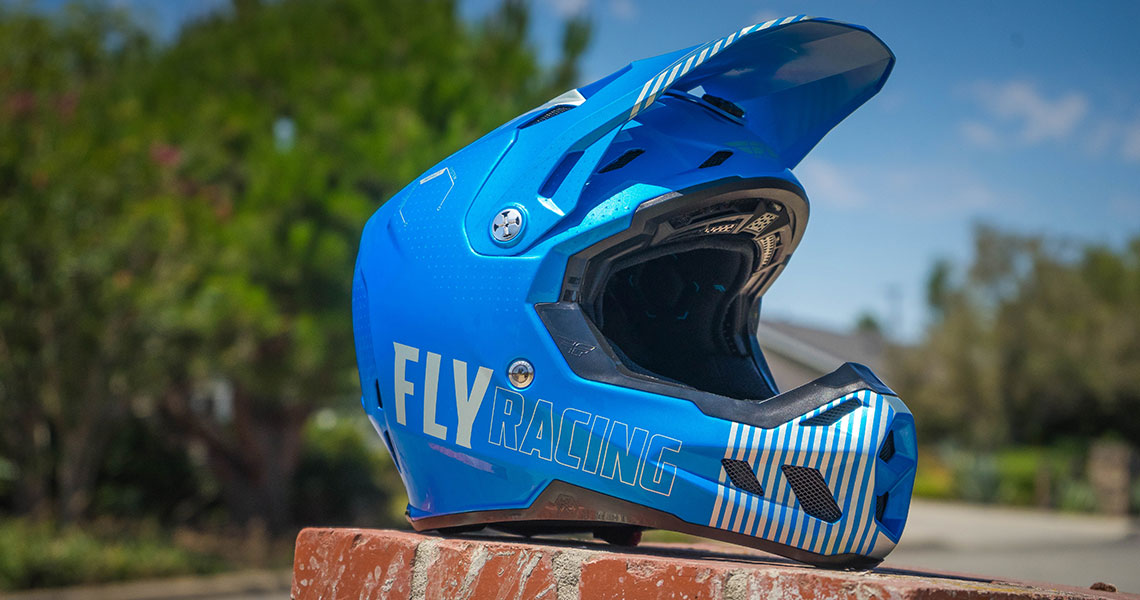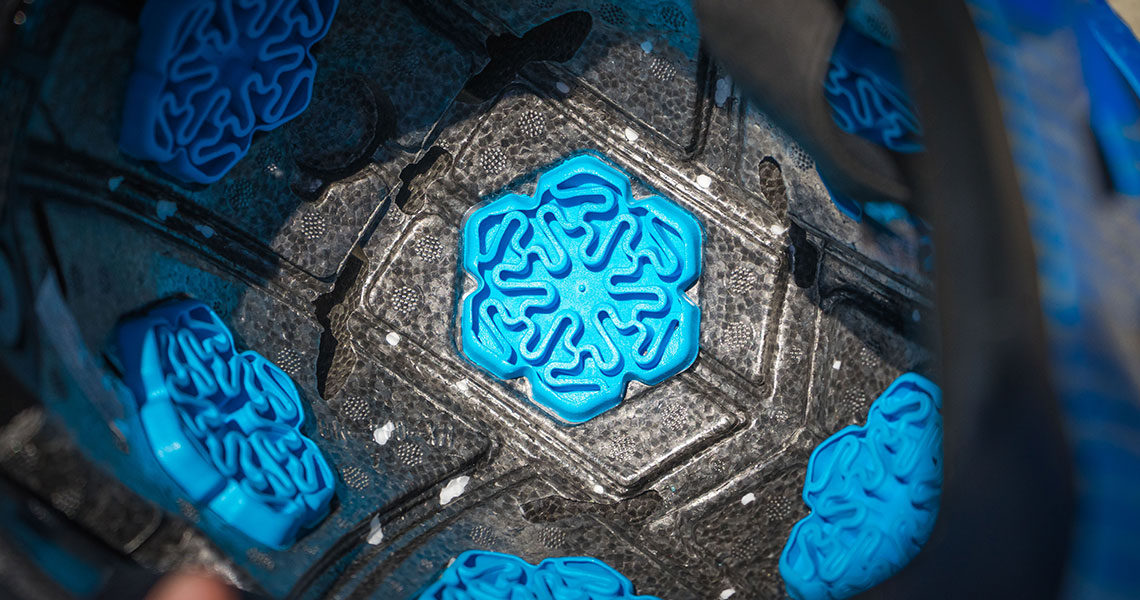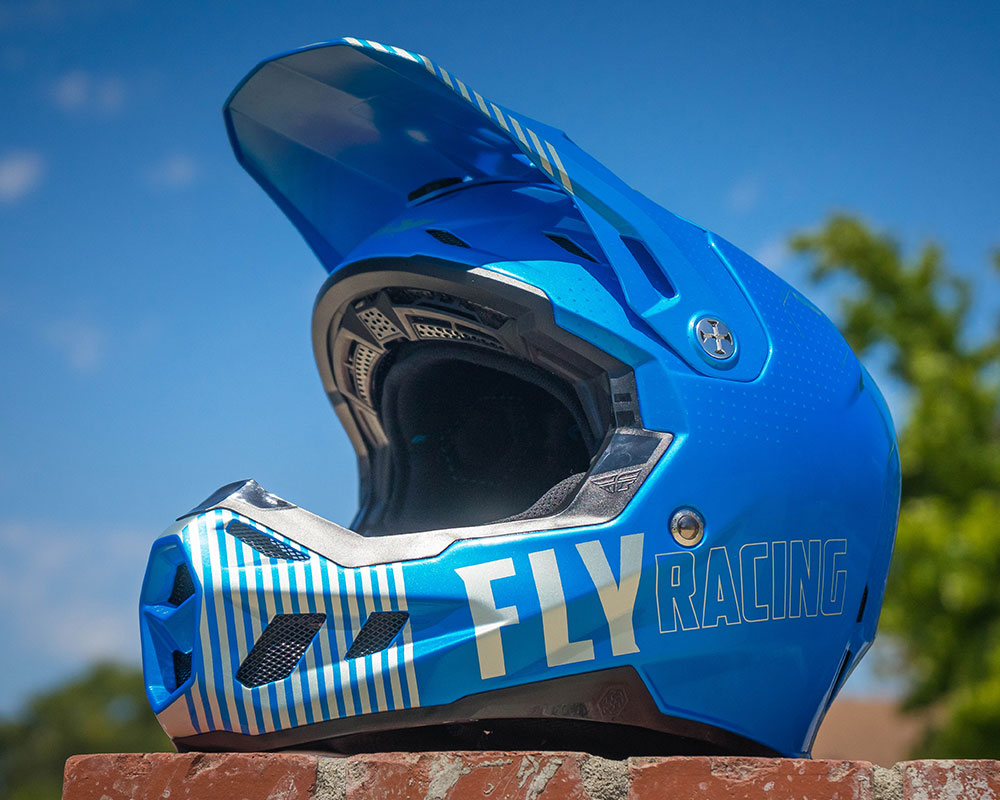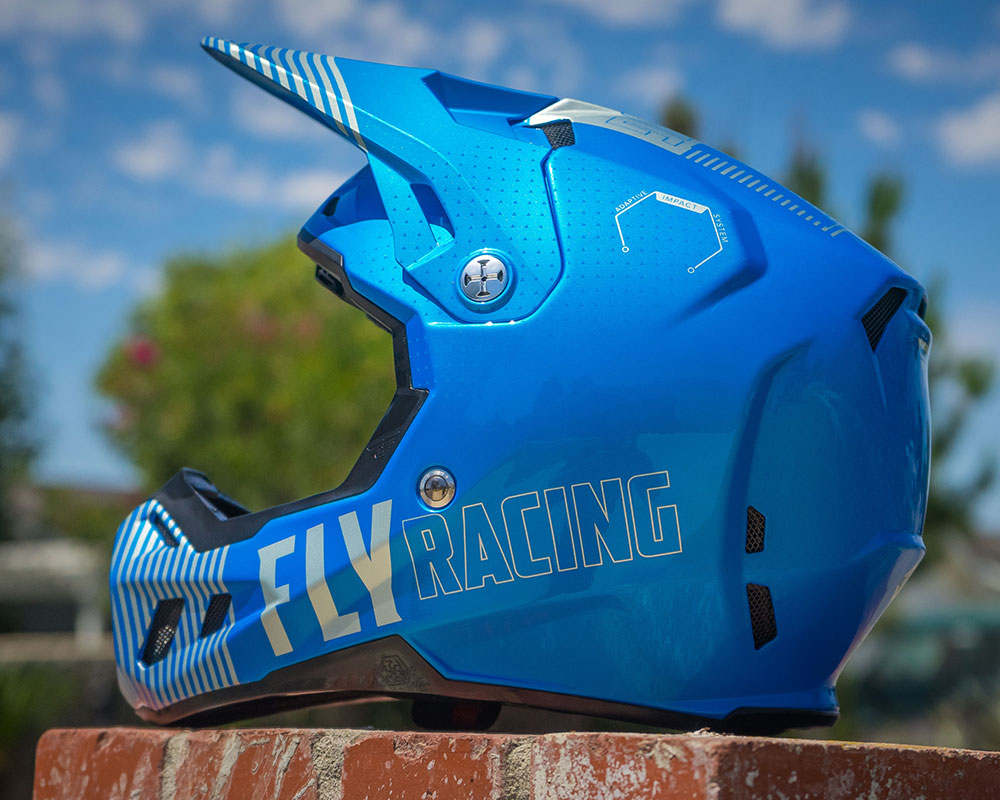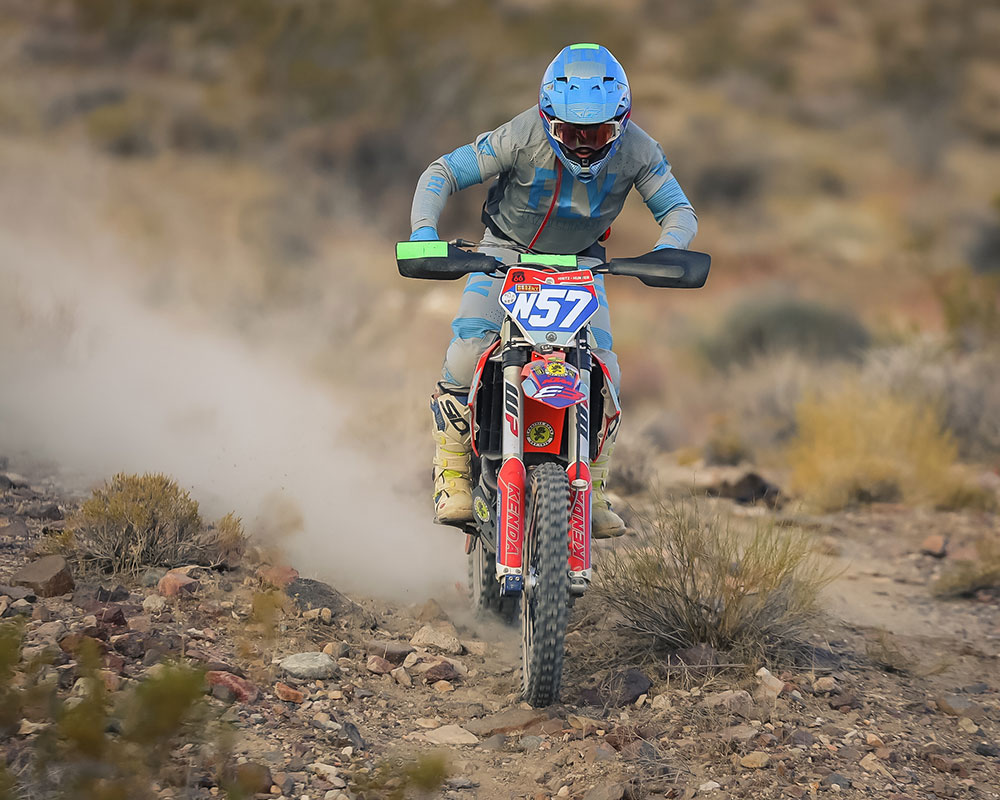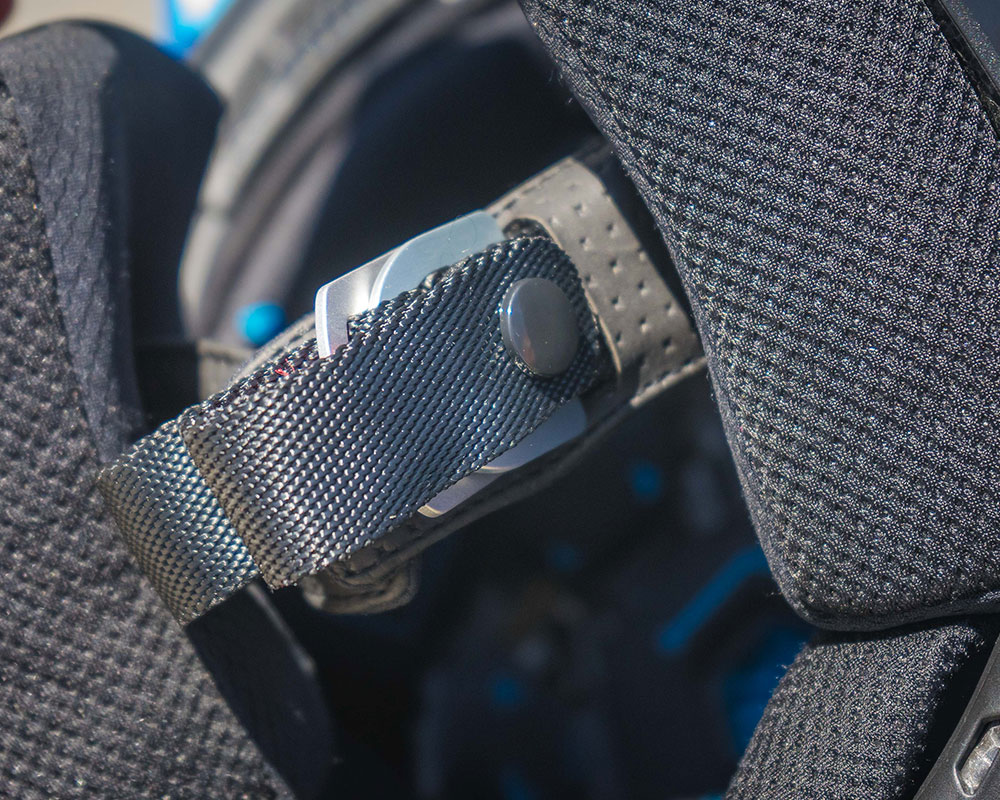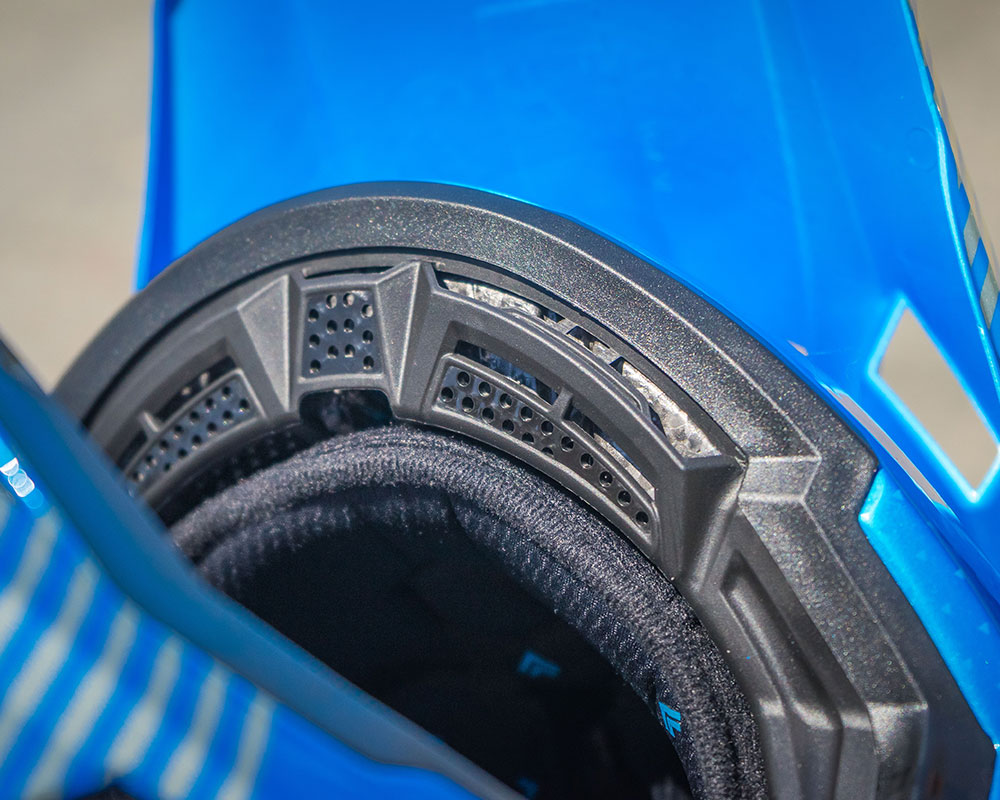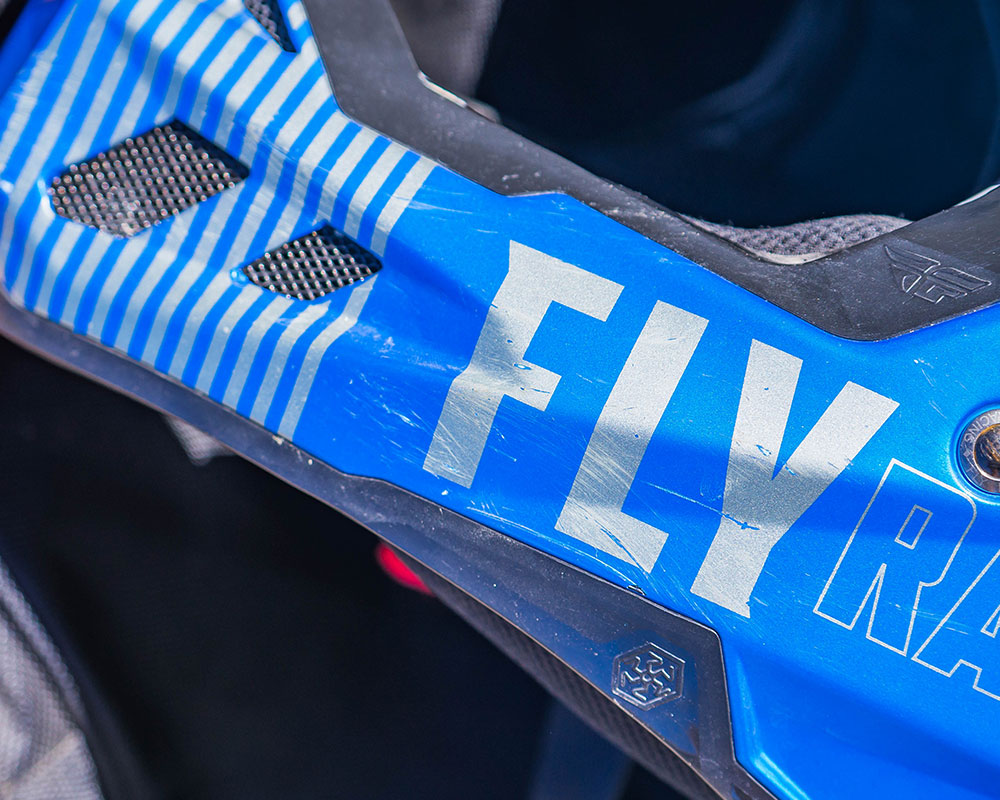Fly Racing Formula CC Helmet
Company: Fly Racing
Price: 449.95
Additional Pricing
- Carbon: $689.95
- Comfortable, lightweight helmet.
- CC version retails at cheaper price with the same safety.
- Ventialtion keeps head cool.
- Quiet helmet.
- Protected us well in all of our crashes.
- Carbon helmet retails for $689.95
- Vents allow dirt to pass through helmet and onto head.
What it is
- Fly's "Budget Friendly" Formula Helmet.
- Carbon Composite Construction.
Fly Racing has been making big strides in its product lineup over the last decade, and that evolution has brought us the Formula helmet. Available in two different versions, both helmets are said to offer the same safety standards, just one with Carbon construction and the other with a Carbon Composite (CC) construction. The Formula helmet features the Adaptive Impact System (AIS) that uses RHEON technology and its surrounding elements for safety. The CC’s tri-weave composite shell employs carbon fiber, DuPont™ Kevlar®, and fiberglass for its construction. The RHEON Energy Cells are claimed to absorb low-speed impacts, both linear and rotational, while the Conehead® EPS’s soft construction absorbs both low and high speed impacts in a progressive fashion. The EPS liner differs in thickness throughout the helmet in strategic areas to act as additional suspension for your head. Their True Functional Ventilation sees multiple air inlets, channels, and outlets to keep your head cool in motion.
The helmet is ECE and DOT approved. The CC retails for $449.95 and the Carbon retails for $689.95. To note, the CC comes with a soft fleece bag, while the Carbon comes with a Fly Helmet Bag.
How it works
- Lightweight.
- Comfortable fit and true sizing.
- Performed well under heavy crashes.
- Almost too much ventilation.
Helmets are very difficult to test. First, you don’t have many test riders lining up to lawn dart themselves into the ground to get a good basis on how the helmet performs under the impact. Trust us, we tried! Next, it’s nearly impossible to replicate a crash. Different speeds, angles, dirt types, etc. all play a factor in a crash, and to mimic one is tough. Finally, most helmets are designed to perform well under certain impacts, and it’s up to the consumer to figure out where they want their helmet to work best.
However, here at DBT, we do have a method in our helmet testing. It dates back to just a few short centuries ago, where Sir Isaac Newton theorized F=MA (Force = Mass x Acceleration). To us, the lighter the helmet, the less force you will receive on your head. Of course, weight can’t be everything, or we would be wearing flimsy little half-shell bicycle helmets with nearly no protection. But, you can design a helmet to be lightweight yet still sturdy enough to take an impact.
Fly’s Formula helmets (Carbon and CC) are both extremely lightweight in comparison to almost every other helmet on the market. The Carbon weighed in at just 3.01 lbs on our scale, while the Carbon Composite helmet weighed slightly more at 3.21 lbs. Conversely, our Bell Moto 9 Flex weighed in at 3.58 lbs on the same scale. When you pick the helmet up or put it on, it’s quite noticeable and one of the best features of this helmet. For long days in the saddle, your neck isn’t as sore or tired, and looking around through corners is easier as it takes less energy to move your head.
The fit of the helmet is very universal and one of the more comfortable helmets we’ve strapped on. I (Trevor Hunter) am mostly a Medium wearer, though in some instances I need a Large helmet. With the Formula, I fit perfectly fine in a Medium. There were no weird pressure points around the sides or around the back of the head, and the helmet fits nice and snug, something else that is critical for safety. We could easily wear it for an extended period of time and have no complaints.
From a safety standpoint, we feel very confident in the helmet. We’ve hit the ground a few times, though never extremely hard, but nonetheless, we hit the dirt in multiple scenarios. From tipping over on our head to a fairly violent crash hitting our head and rotating as we hit the ground at a decent speed, we tested it more than we had hoped to. Each time, we never felt any signs of hitting our head, a headache, or anything. Instead, we felt as if we barely crashed and got right back up and back on track. Also to note, the shell of the helmet is fairly round which helps reduce any hooking or jolting when hit the ground in a rotational impact. One of our crashes was hard under rotation but we didn’t feel any stops or pulls from the ground. (You can check out one of our crashes HERE from a POV perspective).
Another positive most of our riders found with the Formula helmet is the lack of noise that transmits through the helmet. It feels as if you’re almost wearing earplugs. It isn’t quite as drastic as wearing earplugs, but we feel it is a good happy-medium allowing you to hear your bike and the RPMs but still hear what’s going on around you as well.
One small negative we found with the helmet is with the venting. Though we really like the vents and the cooling it offers when the temperatures are high, it lets a lot of dirt through the helmet when you’re getting roosted. This doesn’t apply to everyone, as not all people are racing or riding moto tracks around other people, but it’s something that came up with our riders. The only other gripe we have is that it isn’t necessarily “fashionably acceptable” to wear this helmet with other brands of gear. Though, they do offer a solid all-black colorway with minimal Fly logos that can be stealthily worn by those who wish to do so.
Check pad and liner install/removal is average (Bell Helmets has a simple magnetic system that takes just seconds), but it is on par with most other helmets out there. The visor is simple to move up and down with the standard two side screws and a middle screw to lock it in place. The visor is limited on how high or low it can go, but none of our riders were looking to put it past its max point.
Overall, we’re very pleased with the fit and function of Fly’s Formula Helmet. The lack of weight is very appealing from both a safety aspect and a comfort standpoint. We’ve hit the ground fairly hard and just simply tipped over and never had any feelings of hitting our head afterward. The price tag is steep on the Carbon at $689.95, but the CC version is priced competitively at $449.95. Fly states that both the Carbon and the CC helmets are identical aside from the different materials used which results in a slight weight bump. Of course, taking into account our thoughts on safety with F=MA, we feel the Carbon will be slightly safer purely from a weight standpoint. Of course, you only have one head, so don’t be afraid to properly protect it no matter the price tag that comes with it. We applaud Fly and the other companies who are producing helmets that are the same structurally with the safety features, just with the variations using Carbon or a Carbon Composite material to help consumers save some money.
Leave a Reply
